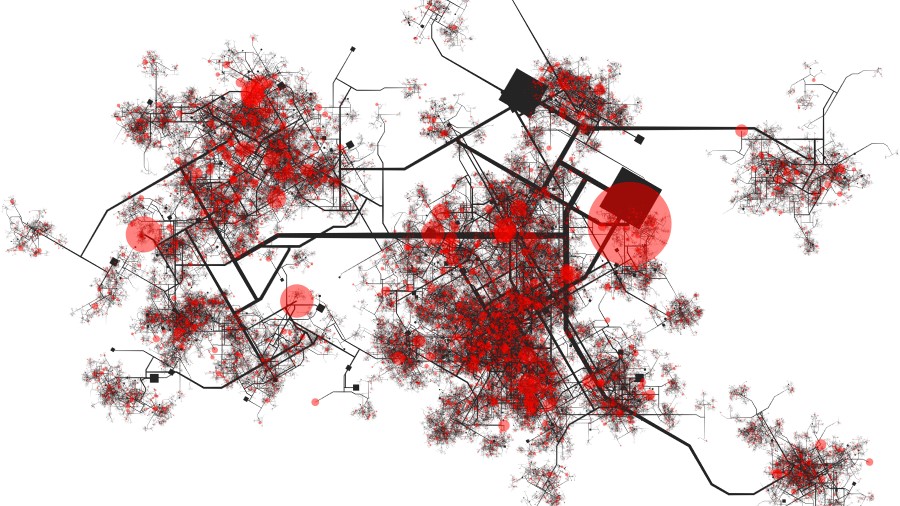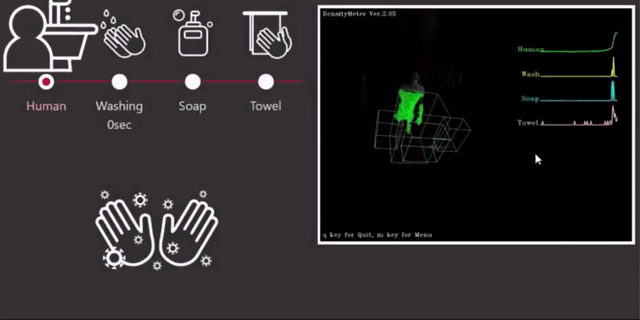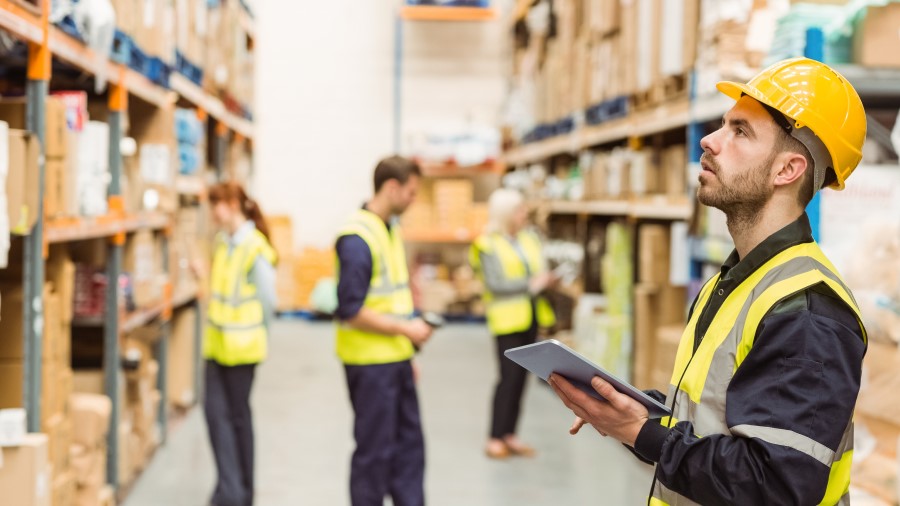By Victor Wang, Subject Matter Expert in Data Analytics, with contributions from Udayan Joshi, Digital Solutions Architect, Hitachi Social Innovation Business
It’s hard to overstate the collective toll taken by the COVID-19 pandemic. The scope is staggering — in the United States alone, millions of people have been infected, trillions of dollars have been spent, and a large portion of the economy has been shut down. Industries like hospitality, food services, retail and transportation have been disproportionately affected, but no sector is immune. Your business isn’t facing this challenge alone.
The good news is that there have never been more sources and kinds of data available for a single, complex event. And businesses and governments around the world are starting to apply a wide range of advanced analytics to that data to address the unprecedented health, economic and social impacts of this crisis.
The world witnessed an unprecedented challenge when the COVID-19 pandemic swept across the globe. It’s hard to overstate the collective toll taken by the pandemic. The scope is staggering — in the United States alone, millions of people were infected, trillions of dollars were spent, and a large portion of the economy was shut down. Industries like hospitality, food services, retail and transportation were disproportionately affected, and no sector was completely immune to it.
The good news is that there have never been more sources and kinds of data available for a single, complex event. And businesses and governments around the world have begun to apply a wide range of advanced analytics to that data to address the unprecedented health, economic and social impacts of this crisis.
The pandemic demanded a paradigm shift in the healthcare industry's approach to understanding and combating infectious diseases and data analytics was employed at the heart of the battle against COVID-19. Tracing the outbreak and modeling data to predict outcomes has been crucial in this crisis and will continue to be vital to managing future pandemics and coping with the new normal. For example, Canadian startup BlueDot has successfully used artificial intelligence (AI) to trace and predict outbreaks by analyzing unstructured data in social media and news reporting.i Analytics isn't just about understanding the virus on a macro scale. It also plays a crucial role in personalizing healthcare. Today, analytics is also finding a home on the front lines, with AI solutions that help health care workers diagnose and monitor the virus or any other diseases much more efficiently.ii
Data intelligence and analytics is further playing a pivotal role in the lab too, accelerating the search for a vaccine.
For instance, Google’s DeepMind unit utilized one of its artificial intelligence (AI) algorithms to catalog the structure of the potential proteins that could help the virus spread. The division then published its findings to assist scientists working on potential treatments.iii Natural language processing (NLP) and AI fuel the COVID-19 Open Research Dataset (CORD-19), which applies analytics to more than 138,000 scholarly articles and shares new insights across the globe to accelerate medical breakthroughs and inform smart policy.iv

Our fight against COVID-19 using data analytics is far from over. Aside from the health consequences of the pandemic, there is nothing more critical than addressing the devastating economic impact of closed businesses. As businesses reopen and prepare for the new normal, it's crucial to leverage data intelligence and analytics to build resilience for future crises of such nature.
The safety of your employees and customers and the success of your reopening will include multiple safety protocols - especially within sectors such as manufacturing and hospitality. You’ll need to identify potential signs of infection and have policies in place to help mitigate any spread. Digital health solutions such as advanced thermal imaging technology combined with artificial intelligence (AI) can help you quickly identify elevated temperatures among people at your site. You can also use 3D Lidar Sensors with data analytics to spot poor handwashing techniques so you can target education and promote greater hygiene awareness. And you can use video analytics to gain insight into the effectiveness of your social distancing measures and use the technologies mentioned to enforce the policies that have been created.

AI and analytics can also help in monitoring sanitation standards and creating efficient schedules for disinfecting equipment. For example, Hitachi is working to combine robotics, 3D Lidar Sensors, and UV light to create automated cleaners that maintain continuous sanitary conditions in the workplace. These advanced-analytics-driven solutions can help your customers and your workforce feel safe and comfortable at your facilities. With Hitachi’s comprehensive Digital Health and Safety solutions you can manage shop-floor safety, build an effective Health, Safety & Environment strategy, and avoid incidence costs and litigations.
Not only can these technologies help you successfully reopen your facilities, they can extend across your business to provide essential real-time visibility and operational intelligence. By using the Pentaho - Intelligent DataOps Platform to capture and combine information across regions, you’ll be in a better position to navigate regulation and compliance in multiple locations around the world.
Once you’re able to safely reopen, analytics will be an important tool to help you understand the ways your customers’ behavior has been drastically affected by the pandemic. According to a McKinsey study, COVID-19 is significantly shifting what, where and how consumers are making purchases. Demand for household consumer goods skyrocketed 76% over 2019 levels in the three weeks following the first major U.S. outbreak. E-commerce in the grocery industry more than doubled in March alone, and between 30% and 40% of all consumers experimented with new brands during this time.v
Advanced Data Analytics can provide you with insight into the highly dynamic and volatile trends that are impacting your industry. AI and machine learning (ML) algorithms can analyze point-of-sale transactional data across multiple locations. This information can help you control inventory and personnel at fulfillment centers that will most likely see spikes from online sales. You can also use it to reduce production of specific parts in segments that have seen a slowdown, or better monitor competitors to identify opportunities in the marketplace.
In the wake of COVID-19, data analytics has become an essential tool for offline stores and retailers, just as it has been for e-commerce giants. Advanced analytics can unlock the potential of retail by optimizing inventory and platforms, enhancing overall operational efficiency, guiding retailers through the digital landscape, and improving the customer experience. Retail automation powered by real-time data insights empowers retailers to make informed decisions, capitalize on trends, personalize interactions, and remain competitive in a dynamic market.
In addition to tracking consumer trends, analytics can be applied to operational data to improve efficiency and visibility. This can be useful in the near term for businesses such as restaurants that must meet capacity restrictions. With analytics and AI, these businesses can determine what changes and improvements they need to make to stay in business at different percentages of capacity through the phases of reopening. For instance, in addition to optimizing seating arrangements, restaurants can use NLP to monitor social media to predict online or dine-in options and use conversational chatbots for customers’ orders.
Data intelligence and analytics can also help with supply chain disruptions. Resource shortages in Brazil or railway delays in China impact your bottom line, and the ability to track these vagaries in real time is a strain for traditional forecasting. Using predictive analytics, you can increase the efficiency of business operations by predicting the availability of your parts and optimize your supply chain dynamically.
While we navigate the aftermath of the pandemic, it is essential to recognize that the threat of disruptions persists. Now more than ever, it is imperative to increase the frequency of your supply-chain forecasts while synthesizing thousands of data points across every geography in which you operate. This allows you to outmaneuver disruption, manage resources and support your partners across the chain.
Analytics also maximizes your operational efficiency through better, more actionable communications by informing you about infections in the workplace and initiating contact tracing more promptly. Imaging solutions, smart sensors and automated tracking powered by AI can provide you with important tools to refine policy around workflow, safety procedures, education and training programs, and operation or business process changes.

With endless ways to leverage data, where can you best deploy analytics to have the greatest impact on your employees and business? The following strategies can help you leverage your data resources effectively:
Hitachi Social Innovation Business (SIB) group is committed to powering good and bringing social, environmental and economic value to society. To help fight such pandemics, we bring a suite of digital solutions that work together to fulfill our mission. These solutions include Lumada, IT infrastructure hardware, digital health solutions, image and video analysis, advanced analytics capacity and more.
We are working on several projects through our co-creation partnerships with our clients. For example, we’re using data from lidar, video and other smart sensors with advanced analytics to create a more efficient cleaning robot to sanitize public areas. And we are designing and implementing thermal screening solutions by orchestrating sensors, cloud hardware, imaging analysis and contact tracing to safely reopen businesses and monitor social distancing compliance. SIB is also integrating previously siloed data such as video, communication, and machine data from production lines and applying advanced analytics to help manufacturers operate more efficiently and safely.
Recently, Hitachi partnered with Circulor to provide organizations with an unprecedented level of functionality to monitor and manage supply chains through a comprehensive, transparent platform that leverages AI-powered analytics to deliver valuable supply and demand insights to help them make more informed decisions, forecast more accurately and increase supply chain efficiency, transparency, sustainability and resilience.
To learn more about how you can use technology to respond to pandemics like COVID-19, read about our Digital Health and Safety Solution.

Subject Matter Expert in Data Analytics, Hitachi Social Innovation Business
Victor Wang is a thought leader in data science who supports the Hitachi Social Innovation Business division. He is passionate about uncovering valuable and actionable business insights by applying machine learning and AI on big data for the enterprise. Victor analyzes data and creates solutions that deliver value to Hitachi customers.

Digital Solutions Architect, Hitachi Social Innovation Business
Udayan’s expertise is in applying digital technology capabilities to architect solutions that address the double bottom-line and delivering a positive social impact while fulfilling business requirements across manufacturing, transportation and smart spaces. Udayan delivers full stack solution architecture and design support by leveraging a wide range of Hitachi and broader ecosystem technology capabilities for a wide range of solutions including predictive maintenance, asset management, ML/AI-based failure prediction models, process re-engineering, manufacturing intelligence solutions, and innovative applications of video analytics including lidar.